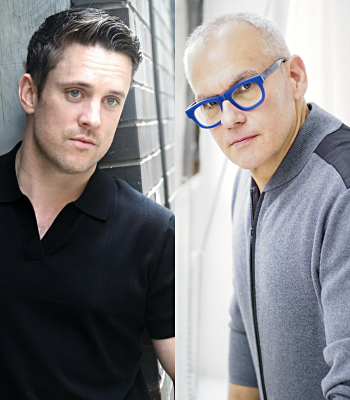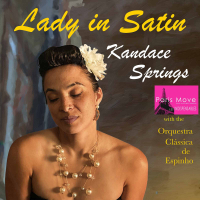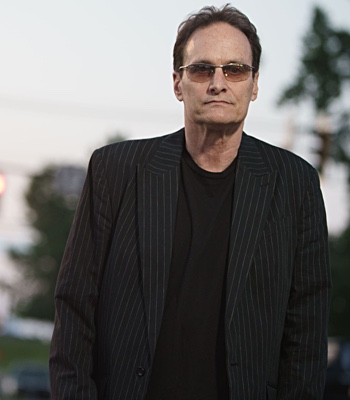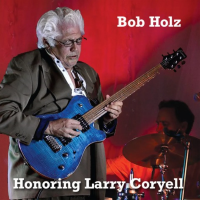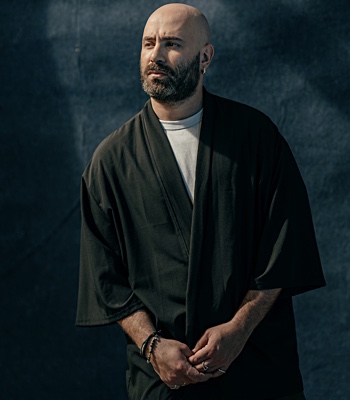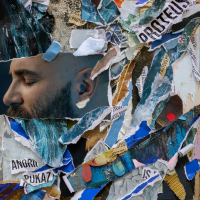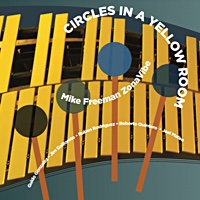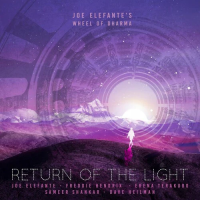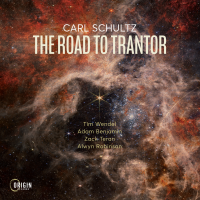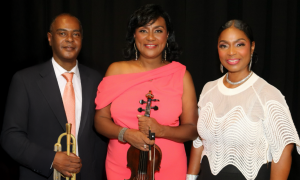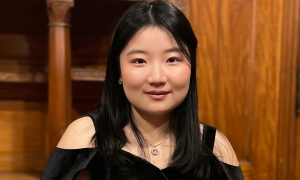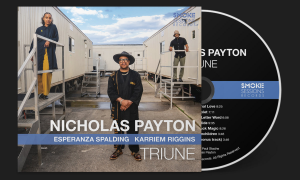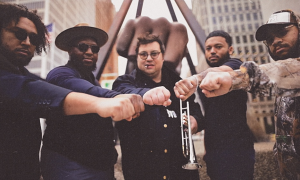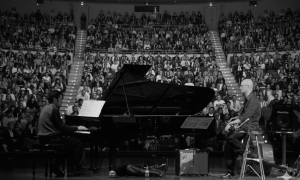By Pico
There's a shelf right above my computer monitor where I place all the new release CD's I intend to review. Over the course of the year, that batch has grown and as I type this, the shelf has 115 CD's on it. With less than two months left in 2010, that doesn't leave a lot of time left to tell everyone about them before taking a look back at the best releases of these twelve months. Yes, we listen to an awful lot of jazz...much more than can be written about, apparently.
This calls for some fairly drastic measures. A small handful of them will get the full review. Many of these are going to have to fall by the wayside. The remainder are those that are too good to not give a comment or two about, though. So for the next couple of weeks, I'm going to spew out batches of micro-reviews, even shorter than Quickies. We're calling this series “From The Stacks." Each installment will feature quick takes on a half dozen or more of CD's out of these eleven dozen plus CD's.
This won't be easy: it will be tough enough to figure out which CD's get left out, and harder still to limit comments on the ones who do make the cut to just a few sentences. Conciseness will reign supreme on this space for a while. So let's get started...
Marc Cary Focus Trio Focus Trio Live 2009: Last month, percussionist Sameer Gupta presented a CD that was one of the more creative fusions of East Indian and jazz music ever attempted. His keyboardist Marc Cary played a key role in that endeavor but the productive partnership extends to Cary's own records, too. Live 2009 archives four performances over three days in July in three different countries. Whether it's bop standards like"Round Midnight" and Jackie McLean's “Minor March," or original salutes to civil rights leaders Martin Luther King and Malcolm X ("Slow Blues For MLK," “Runnin' Out Of Time"), Cary, Gupta and bassist David Ewell run through a strong set of songs that's rooted heavily in the bop tradition, but subtly integrates strokes of south Asian, eastern Asian, African, electric fusion and even Native American music into the program. Well recorded and well performed, Focus Trio Live 2009 documents a jazz piano trio that's about a half a world apart from other piano jazz trios.
Mike Marshall An Adventure 1999-2009: This is a compilation of some highlight tracks from Marshall's albums released under Adventure Music, a label he co-founded in the late 1990's. Going agaist the grain, the track sequence goes in reverse chronological order, which means two cuts from last year's Mike Marshall's Big Trio begin the collection. It works back to collaborations with Darol Anger, Jovino Santos Neto and Bela Fleck. The common denominator, naturally, is Mike Marshall's mandolin, mandocello and acoustic six-string guitar. As arguably the world's foremost mandolin/mandocello player, you get to hear some amazing performances, but also some richly melodic tunes that range from bluegrass and European folk to jazz and Brazilian fusion. With Marshall in a variety of settings playing alongside a parade of musicians who are just as virtuosic on their own instruments, An Adventure makes a logical starting point to start your own adventure exploring the music of Marshall.
William Parker Organ Quartet Uncle Joe's Spirit House: Around the same time William Parker released the culmination of an epic Curtis Mayfield project that spanned live performances over seven years, Parker quietly released a decidedly more personal and discreet affair, Uncle Joe's Spirit House. Dedicated to his 92 year old uncle Joe and his wife of 65 years, Aunt Carrie, the music that Parker chose for honoring his aunt and uncle opens up yet another facet of his wide-ranging artistry: organ-based soul-jazz. This is soul-jazz done Parker's way, though, which means Cooper-Moore's organ leaves the bass pedals unused, because Parker is handling that chore on his standup bass. The organ itself sounds more antiquated and “churchy" than the kind you'd hear Jimmy Smith play. Darryl Foster's sax is a lot closer in spirit to Lester Young than Stanley Turrentine. And lastly, Gerald Cleaver's drums has a lighter touch and more shadings than a straight funk drummer might do in an organ combo. Toss in Parker's nine compositions with his signature avant-garde flair and you have a soul-jazz record that's like no other soul-jazz record. It's not just a “quiet" record, it's a quiet triumph. And, dare I say, Parker's best album overall this year.
Ideal Bread Transmit: Vol. 2 of The Music of Steve Lacy: Ideal Bread is a Steve Lacy tribute band, at least a tribute band in that they play the songs of the late, great soprano saxophonist and composer of the free jazz world. But this four piece band, which includes baritone saxophonist Josh Stinton, Lacy's copyist and student during the last two years of his life, brings Lacy's idiosyncratic pieces to life by playing versions that often pull in some of the best ideas from prior renditions. Other compositions were offered by Lacy's widow Irene Aebi, implying that these particular selections haven't been recorded before. The soloists Stinton and trumpeter Kirk Knuffke employs Lacy's directive to use a piece of the melody to build solos upon and the band, which also included drummer Tomas Fujiwara and bassist Reuben Redding, always seem to anticipate each others next move. I know I don't spend nearly enough time absorbing the undernoticed and underutilized music of Lacy, and I'm reminded of that every time I listen to Ideal Bread's second album, Transmit
Ryan Cohan Another Look: Pianist and composer Ryan Cohan follows up his highly acclaimed One Sky (2007) with another slate of mostly originals, Another Look. Though Cohan is an exceptional composer (Ramsey Lewis has recorded many of his tunes), Cohan sought to make his latest record more performance-oriented. He supplements his quartet (Geof Bradfield, woodwinds; Lorin Cohen, bass; Kobie Watkins, drums) with Joe Locke on vibes and Steve Kroon on percussion. Locke and Kroon doesn't disrupt the cohesiveness of the band at all, however. Kroon brings Latin and Brazilian shadings to the proceedings, and Locke's radiant vibes brings out Cohan's polished melodies that might owe much to Monk, Ellington and Golson, but are squarely residing in modern, 21st century sensibilities. More to the point, Cohan's arrangements emphasize integrating rhythms into harmonies into a rollicking single unit. His band is likewise very together, reaping the rewards of touring together around the world since 2003. Another Look is a modern jazz record that deserves many listens.
Rafi Malkiel Water: A record that truly lives up to its title, composer, arranger and horn player Rafi Malkiel creates a stew of orchestral klezmer jazz, Latin jazz, classical, and European folk music that is themed around H2O. Throughout every cut, water can be heard as a percussion instrument, being poured, splashed and rained. Malkiel even invented an “aquaphonium," a hose with a trombone or trumpet mouthpiece and is played underwater. Employing a large ensemble that includes Israeli jazz stars Anat Cohen and her brother Avishai, Water is a sharply conceived and executed album that should quench anyone's thirst for something fresh and imaginative in ethnic jazz.
Conference Call What About....?: Gebhard Weber is the German sax and bass clarinetist we introduced here last spring when reviewing the new album by the combo he co-leads with trombonist Steve Swell, The Ullmann|Swell 4. Ullman has other projects going, though and the Conference Call whack jazz supergroup he co-founded is celebrating its tenth year in existance with a sprawling, double-disc live CD, What About....?. Joining Ullmann are Michael Jefry Stevens on piano, Joe Fonda on bass and George Schuller on drums and percussion. Since all four function together as collective improvisers, the live setting (in Krakow, Poland) showcases what this band can do in the best possible light. The jazz is free, but with varying degrees of freedom: there's basic melodic structure in songs like “Circle" but all out intense spontaneity found on “After Like." “Could This Be a Polka!" uses polka as a launching point for some more abstract hijinks. No matter what they take on, the telepathy is always strong between the players, the passion runs high, and contorting time and space conventions is the order of the day.
There's a shelf right above my computer monitor where I place all the new release CD's I intend to review. Over the course of the year, that batch has grown and as I type this, the shelf has 115 CD's on it. With less than two months left in 2010, that doesn't leave a lot of time left to tell everyone about them before taking a look back at the best releases of these twelve months. Yes, we listen to an awful lot of jazz...much more than can be written about, apparently.
This calls for some fairly drastic measures. A small handful of them will get the full review. Many of these are going to have to fall by the wayside. The remainder are those that are too good to not give a comment or two about, though. So for the next couple of weeks, I'm going to spew out batches of micro-reviews, even shorter than Quickies. We're calling this series “From The Stacks." Each installment will feature quick takes on a half dozen or more of CD's out of these eleven dozen plus CD's.
This won't be easy: it will be tough enough to figure out which CD's get left out, and harder still to limit comments on the ones who do make the cut to just a few sentences. Conciseness will reign supreme on this space for a while. So let's get started...
Marc Cary Focus Trio Focus Trio Live 2009: Last month, percussionist Sameer Gupta presented a CD that was one of the more creative fusions of East Indian and jazz music ever attempted. His keyboardist Marc Cary played a key role in that endeavor but the productive partnership extends to Cary's own records, too. Live 2009 archives four performances over three days in July in three different countries. Whether it's bop standards like"Round Midnight" and Jackie McLean's “Minor March," or original salutes to civil rights leaders Martin Luther King and Malcolm X ("Slow Blues For MLK," “Runnin' Out Of Time"), Cary, Gupta and bassist David Ewell run through a strong set of songs that's rooted heavily in the bop tradition, but subtly integrates strokes of south Asian, eastern Asian, African, electric fusion and even Native American music into the program. Well recorded and well performed, Focus Trio Live 2009 documents a jazz piano trio that's about a half a world apart from other piano jazz trios.
Mike Marshall An Adventure 1999-2009: This is a compilation of some highlight tracks from Marshall's albums released under Adventure Music, a label he co-founded in the late 1990's. Going agaist the grain, the track sequence goes in reverse chronological order, which means two cuts from last year's Mike Marshall's Big Trio begin the collection. It works back to collaborations with Darol Anger, Jovino Santos Neto and Bela Fleck. The common denominator, naturally, is Mike Marshall's mandolin, mandocello and acoustic six-string guitar. As arguably the world's foremost mandolin/mandocello player, you get to hear some amazing performances, but also some richly melodic tunes that range from bluegrass and European folk to jazz and Brazilian fusion. With Marshall in a variety of settings playing alongside a parade of musicians who are just as virtuosic on their own instruments, An Adventure makes a logical starting point to start your own adventure exploring the music of Marshall.
William Parker Organ Quartet Uncle Joe's Spirit House: Around the same time William Parker released the culmination of an epic Curtis Mayfield project that spanned live performances over seven years, Parker quietly released a decidedly more personal and discreet affair, Uncle Joe's Spirit House. Dedicated to his 92 year old uncle Joe and his wife of 65 years, Aunt Carrie, the music that Parker chose for honoring his aunt and uncle opens up yet another facet of his wide-ranging artistry: organ-based soul-jazz. This is soul-jazz done Parker's way, though, which means Cooper-Moore's organ leaves the bass pedals unused, because Parker is handling that chore on his standup bass. The organ itself sounds more antiquated and “churchy" than the kind you'd hear Jimmy Smith play. Darryl Foster's sax is a lot closer in spirit to Lester Young than Stanley Turrentine. And lastly, Gerald Cleaver's drums has a lighter touch and more shadings than a straight funk drummer might do in an organ combo. Toss in Parker's nine compositions with his signature avant-garde flair and you have a soul-jazz record that's like no other soul-jazz record. It's not just a “quiet" record, it's a quiet triumph. And, dare I say, Parker's best album overall this year.
Ideal Bread Transmit: Vol. 2 of The Music of Steve Lacy: Ideal Bread is a Steve Lacy tribute band, at least a tribute band in that they play the songs of the late, great soprano saxophonist and composer of the free jazz world. But this four piece band, which includes baritone saxophonist Josh Stinton, Lacy's copyist and student during the last two years of his life, brings Lacy's idiosyncratic pieces to life by playing versions that often pull in some of the best ideas from prior renditions. Other compositions were offered by Lacy's widow Irene Aebi, implying that these particular selections haven't been recorded before. The soloists Stinton and trumpeter Kirk Knuffke employs Lacy's directive to use a piece of the melody to build solos upon and the band, which also included drummer Tomas Fujiwara and bassist Reuben Redding, always seem to anticipate each others next move. I know I don't spend nearly enough time absorbing the undernoticed and underutilized music of Lacy, and I'm reminded of that every time I listen to Ideal Bread's second album, Transmit
Ryan Cohan Another Look: Pianist and composer Ryan Cohan follows up his highly acclaimed One Sky (2007) with another slate of mostly originals, Another Look. Though Cohan is an exceptional composer (Ramsey Lewis has recorded many of his tunes), Cohan sought to make his latest record more performance-oriented. He supplements his quartet (Geof Bradfield, woodwinds; Lorin Cohen, bass; Kobie Watkins, drums) with Joe Locke on vibes and Steve Kroon on percussion. Locke and Kroon doesn't disrupt the cohesiveness of the band at all, however. Kroon brings Latin and Brazilian shadings to the proceedings, and Locke's radiant vibes brings out Cohan's polished melodies that might owe much to Monk, Ellington and Golson, but are squarely residing in modern, 21st century sensibilities. More to the point, Cohan's arrangements emphasize integrating rhythms into harmonies into a rollicking single unit. His band is likewise very together, reaping the rewards of touring together around the world since 2003. Another Look is a modern jazz record that deserves many listens.
Rafi Malkiel Water: A record that truly lives up to its title, composer, arranger and horn player Rafi Malkiel creates a stew of orchestral klezmer jazz, Latin jazz, classical, and European folk music that is themed around H2O. Throughout every cut, water can be heard as a percussion instrument, being poured, splashed and rained. Malkiel even invented an “aquaphonium," a hose with a trombone or trumpet mouthpiece and is played underwater. Employing a large ensemble that includes Israeli jazz stars Anat Cohen and her brother Avishai, Water is a sharply conceived and executed album that should quench anyone's thirst for something fresh and imaginative in ethnic jazz.
Conference Call What About....?: Gebhard Weber is the German sax and bass clarinetist we introduced here last spring when reviewing the new album by the combo he co-leads with trombonist Steve Swell, The Ullmann|Swell 4. Ullman has other projects going, though and the Conference Call whack jazz supergroup he co-founded is celebrating its tenth year in existance with a sprawling, double-disc live CD, What About....?. Joining Ullmann are Michael Jefry Stevens on piano, Joe Fonda on bass and George Schuller on drums and percussion. Since all four function together as collective improvisers, the live setting (in Krakow, Poland) showcases what this band can do in the best possible light. The jazz is free, but with varying degrees of freedom: there's basic melodic structure in songs like “Circle" but all out intense spontaneity found on “After Like." “Could This Be a Polka!" uses polka as a launching point for some more abstract hijinks. No matter what they take on, the telepathy is always strong between the players, the passion runs high, and contorting time and space conventions is the order of the day.

